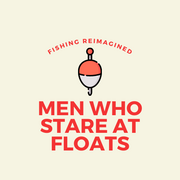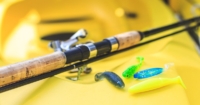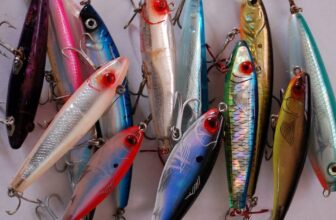Some links on this page are affiliate links, which do not impact our impartiality. We recommend the best product and then find out if it is available through one of our partners.
- You can buy a good quality fishing kayak for £500
- But there are motorised and pedal-powered kayaks available for over £2,000
- Sit-on-top and pedal-powered kayaks are the best options for fishing
As an aspiring kayak fisherman, you need to know how to choose the right fishing kayak. A fishing kayak can completely revolutionise your fishing experience. Reach those areas you’ve always seen as inaccessible. Find those offshore wrecks you can’t reach from the shore where real monsters live. Hell, you don’t even need a boat.
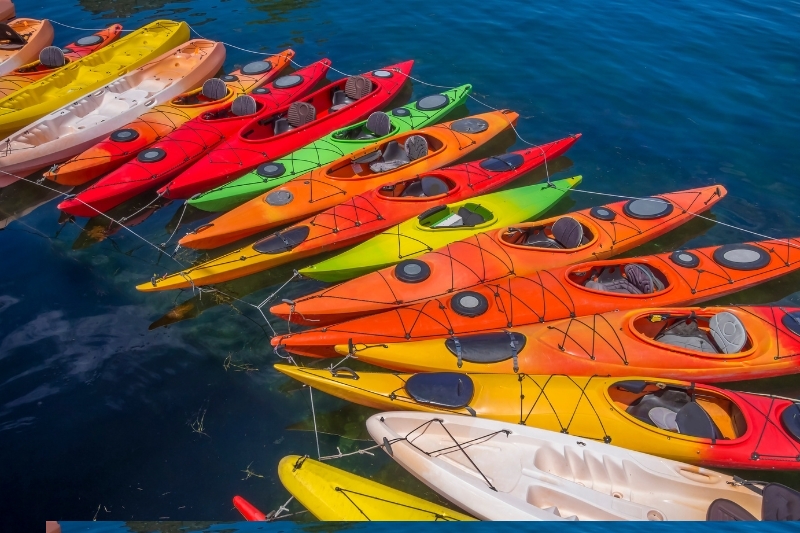
Of course, there are a number of things to consider; budget, propulsion style, storage, size, load capacity and seat position. Fortunately, both inflatable and more traditional hard-shelled sea fishing kayaks have never been better quality and more affordable.
So whilst there are a number of things to consider when purchasing a fishing kayak, this guide should help you navigate the process. Speckled with a few seafaring jokes for good measure.
Kayak Fishing Tips and Techniques For Beginners
Table of contents
And just before we begin, a quick overview of some potentially confusing terms…
Kayak fishing glossary
- Keel: In kayaking terms, a keel is a protruding blade that runs on the vessel’s underside, designed to improve stability when out on the water. Typically keels are made from plastic, fibreglass or metal and, on high-end kayaks, can be retractable so that the kayak can access exceptionally shallow ground.
- Hull: Much like on a boat, a kayak’s hull is the boat’s body that provides the shape and stability required. A hull determines the kayak’s performance characteristics. A rounded hull typically offers better stability than a v-shaped hull but is less streamlined and slower through the water.
- PFD: A PFD, or personal flotation device, is a fancy name for a lifejacket. They provide buoyancy and keep your head above water.
- Denier: Denier is a term used to describe the thickness of a fibre. In kayak fishing, the denier describes the thickness of the material used to construct an inflatable kayak. The higher the denier the stronger and more rip-resistant the fibre. Top-of-the-range models have a material strength of 2000 Deniers.
- Skeg: A skeg is a fin or rudder attached to the bottom of a kayak designed to improve its ability to track a straight course. A skeg can be raised or lowered to provide improved performance in rougher conditions. When kayak fishing, holding a straight course is incredibly beneficial.
- Chine: In kayaking, a chine refers to the edge that transitions from the bottom to the vessel’s side. There are different types of chine – hard and soft are the main types – and your choice of chine affects the kayak’s stability and tracking. A hard chine has a sharp angle and provides improved stability and handling, whereas a soft chine reduces drag and increases a vessel’s speed. They also tend to be better at handling rougher conditions.
- Scupper: A scupper is a small hole or channel in the bottom of the kayak that allows for automatic water drainage. They prevent water from pooling in the kayak and make kayaks much easier to clean, additionally providing extra stability.
What types of fishing kayaks are there?
There are many different types of fishing kayaks out there, which can feel a little bit intimidating. Fortunately, any of the features are not specific to the individual kayak either. If you’re looking for a pedal-powered kayak, that doesn’t mean sit-on-top kayaks are out the window. The two can be combined. Ditto with motor propulsion kayaks, as a motor, can typically be installed on any type of fishing kayak.
The main types of fishing kayaks are;
- Sit-on-top-kayaks: Open-top kayaks are superb for fishing thanks to their extra stability and comfort. The hip and backache associated with kayaking for longer periods of time can be alleviated with a sit-on-top mechanic. Perfect for beginners, they tend to be the most affordable way into kayak fishing.
- Sit-in-kayaks: A more traditional type of kayak that’s typically more stable and provides more protection from the elements and excellent, watertight storage. These tend to be better for longer trips and for the more experienced paddler, as you’ll need to know how to self-rescue if (or rather when) you capsize.
- Inflatable kayaks: The ultimate space-saver, inflatable kayaks are superb for the urban dwellers among us. Easy to store and transport, the best models are incredibly durable, stable and rip-resistant.
- Pedal kayaks: pedal-powered kayaks don’t rely on a paddle to propulsion which means you’re no longer having to think about how to keep your kayak in place when casting or landing a fish. They typically come with a retractable rudder mounted and hand-operated at the stern. An absolute game-changer and once you’ve tried it you’ll never go back.
- Tandem kayaks: Two-person kayaks that have ample storage, and greater stability and are fantastic for longer trips. For the larger person, the two-person kayaks can be modified for single use. Of course, they are the least transportable.
- Stand-up fishing kayaks: Stand-up kayaks are designed for stability and longer casting. The hull is designed like a pontoon and is typically fitted with a wide, anti-slip bottom. The framed seats allow you to fish from a sitting position too. Superb for fishing in larger areas and comfortable trips.
There are other types of fishing kayaks to be aware of, including fly fishing kayaks, motor-mounted kayaks (the motor can be mounted on the stern, side or centre of the vessel) and outrigger kayaks. Fitting your fishing kayak with an outrigger can really help with fishing in rougher waters and chasing fish over many miles.
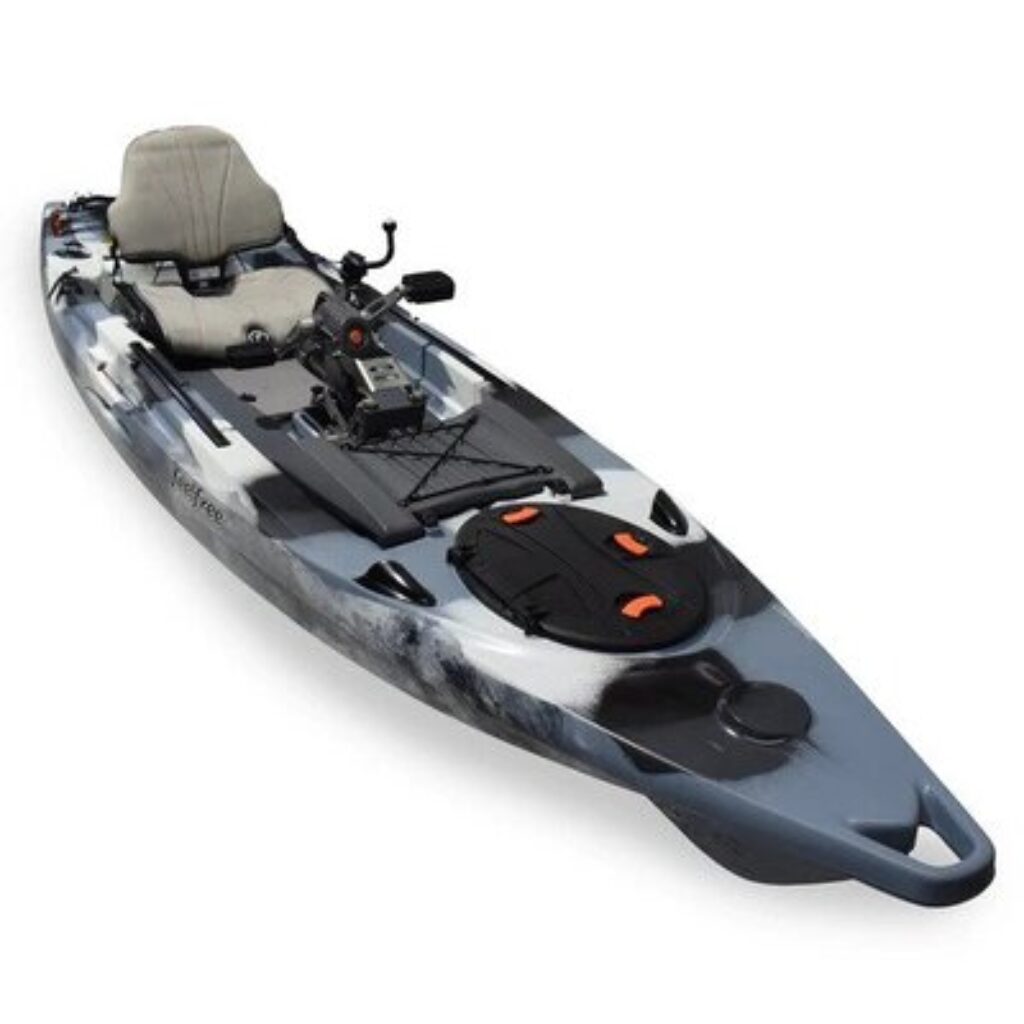

How much does a fishing kayak cost?
Typically a fishing kayak will cost anywhere from £250 – £1,000, with top-of-the-range models coming in at well over £2,000. The most basic options are pretty rough and ready but will do the job. The best fishing kayaks equipped with all the mod-cons are serious pieces of kit.
As a beginner who’s looking to dip their toes in the not-so-proverbial water, a fishing kayak of £400 – 600 or so is an excellent starting point. You can get some really good models at that price. However, for the more seasoned kayaker – or for those going out on longer expeditions – you should be looking to spend in the £1,000+ range. Particularly if you’re looking for pedal-powered or motorised fishing kayaks.
What is the best-size fishing kayak?
The best-sized fishing kayak completely depends on where you’re fishing, the type and size of fish you’re targeting, the length of trip you plan on doing, the prevailing conditions and whether you plan on riding solo. It stands to reason that a two-person kayak is going to be longer than a single-person kayak. And if you’re heading out on longer trips, you’ll need a longer fishing kayak for storage.
As a guideline, a single-person sea-faring kayak should be around the 12-foot mark and over 3 feet wide. The wider the kayak the more stable it is. Whereas if you’re primarily fishing on lakes or still waters that are less affected by the weather and water flow, then nine-foot-long kayaks should be suitable.
What features should I consider when purchasing a fishing kayak?
There are a number of key features you need to consider when purchasing a fishing kayak, all of which relate to the type of fishing you’re looking to do, the prevailing weather conditions, trip length and – of course – your price range. The key kayak fishing specifications are:
- Kayak type
- Length
- Width
- Weight and load capacity
- Hull and keel design
- Seat position
- Propulsion
- Portability
- Location
- The type of fishing you’re doing
- Storage – for kit and accessories
Here’s an example of the core specifications you need to look for in a kayak – the Sea Eagle 350fx Fishing Explorer Kayak
| Technical Information | Specifications |
|---|---|
| Kayak Type | Inflatable Touring Kayak |
| Length | 11’5″ |
| Weight | 23kg |
| Load Capacity | 261kg |
| Fishing Rod Holder Locations | 6 |
| Rudder Control | Yes |
| Number of Persons | 1 |
Length
A longer kayak will track straighter, run faster and is typically more stable than its shorter cousins. But this means you’re going to be giving up some manoeuvrability. So a shorter kayak is much more nimble and easier to transport, but less stable. Longer kayaks tend to be better for long trips or ocean voyages thanks to their stability, power and storage capacity. Shorter kayaks tend to be better for freshwater voyages.
Width
The wider the kayak the more stable it is. Obviously, there’s a law of diminishing returns here and anything over three and a half feet wide is probably overkill. Even for seriously rough conditions. But as a good rule of thumb, you should opt for wider, more stable kayaks if you’re doing any kind of stand-up fishing or attempting to land larger fish.
Wider kayaks are a great choice for beginners and those looking for additional storage too.
Weight and load capacity
Weight and load capacity when it comes to kayaks are completely separate entities. The weight of a kayak is just that – its weight – which is crucial information for transportation and portaging between kayaking marks. Whereas its load capacity is the total safe weight capacity it can carry. Yourself included.
Typical single-person kayaks usually have somewhere between 150kg – 181kg, with the top-of-the-range models peaking at somewhere between 250-275kg. If you’re a heavier kayaker please make sure you pay close attention to the load capacity, as cheaper options may not give you much room to manoeuvre. Literally and figuratively.
Hull design
Kayak hulls are very carefully designed and will have a real impact on the vessel’s speed, stability, storage and tracking.
For example, a flat-bottom hull is designed for stability, as it provides a greater surface area that comes into contact with the water. So it’s more secure, but slower. Whereas a v-shaped hull is designed for speed. It’s streamlined and aerodynamic and cuts through the water like a hot knife through water. Not even butter. The trade-off here is stability. A rounded hull tends to be a blend of the two.
A Guide To The Essential Kayak Fishing Accessories and Setup
Keel design
A kayak’s keel is the central structure that runs from stern to bow on the vessel’s underside and can have a tangible impact on a kayak’s stability and performance. There are two main types of kayak keels – retractable and fixed.
Retractable keels can be lifted up and down, allowing the kayak to reach particularly shallow areas and providing better manoeuvrability. A fixed keel (you’ve guessed it) cannot be lifted up or down and its permanence improves tracking and stability on open water. Fixed keels are less flexible, but better for the open sea and rough conditions.
Seat position
if you’re a serious kayak fisherman – particularly one who likes the finers things in life – then kayak’s with a raised seat and room to stand up are the best in class. A high seat position is far more comfortable, allows for greater casting distance and makes re-rigging your rods a breeze. We’re sure this isn’t the case for everyone, but from personal experience, the low-seated kayaks make for uncomfortable hips and lower backs.
Of course, the counter-argument is that lower-seated kayaks are far more stable and have better weight distribution. The higher up you sit, the more at risk, you are of the elements. Some kayaks do offer adjustable seats, which is an excellent option.
Ultimately fishing kayaks with raised seats are better for casting, fly fishing and comfort. But are less stable. And the inverse is true of low-seated kayaks, which are better for rougher conditions.
Propulsion
There are three primary methods of kayak propulsion:
- Paddle: every kayak needs a paddle, even if just as a backup option
- Pedal: arguably the best propulsion method for fishing as it provides a hands-free option ideal for casting and handling fish
- Motorised: this could be an electric or outboard motor system that – whilst it provides a hands-free option – requires real diligence
Pedal power is perfect for kayak fishing and whilst it isn’t essential, it substantially improves the entire kayak fishing experience.
Storage
Whilst storage and load capacity are intrinsically tied (you can only carry as much as the kayak’s load capacity), quality fishing kayaks have excellent accessory storage. Cleverly created nooks, crannies and tackle holders really make the most of the space around you, so your net, pliers and tackle box are always to hand. Rod holders and hull storage should already be already built-in, always look for fishing kayaks with smart storage options.
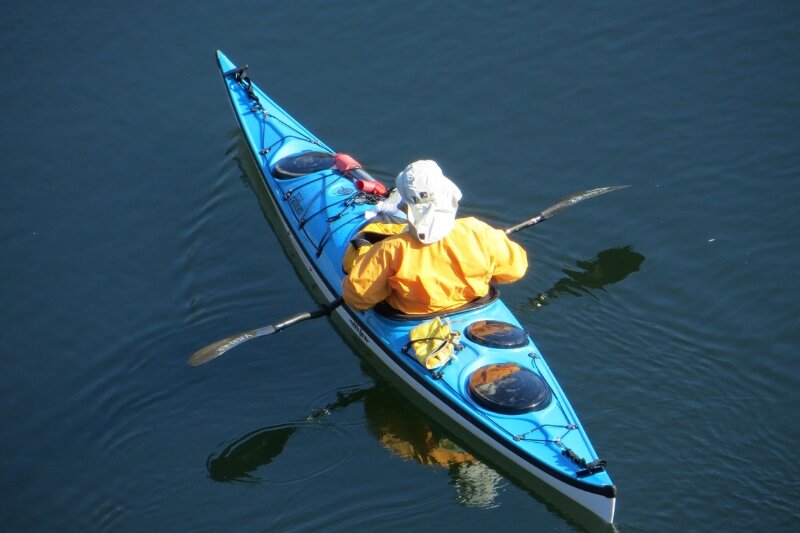
Portability
Of course, this is much more important if you’re heading out on longer trips that will require some camping and carrying, then kayaks that pack down and are easy to carry make a world of difference. The kayak’s weight, size, shape and design are all important considerations when it comes to portability.
Inflatable kayaks are of course the easiest to store transport in their packed-down form. But the inflating and deflating required can be a real pain in the paddle. Certain kayak brands – like Oru – have made fold-up kayaks which you can pack away into a bag. Which obviously makes transportation so much easier than your typical sea-faring or touring kayak.
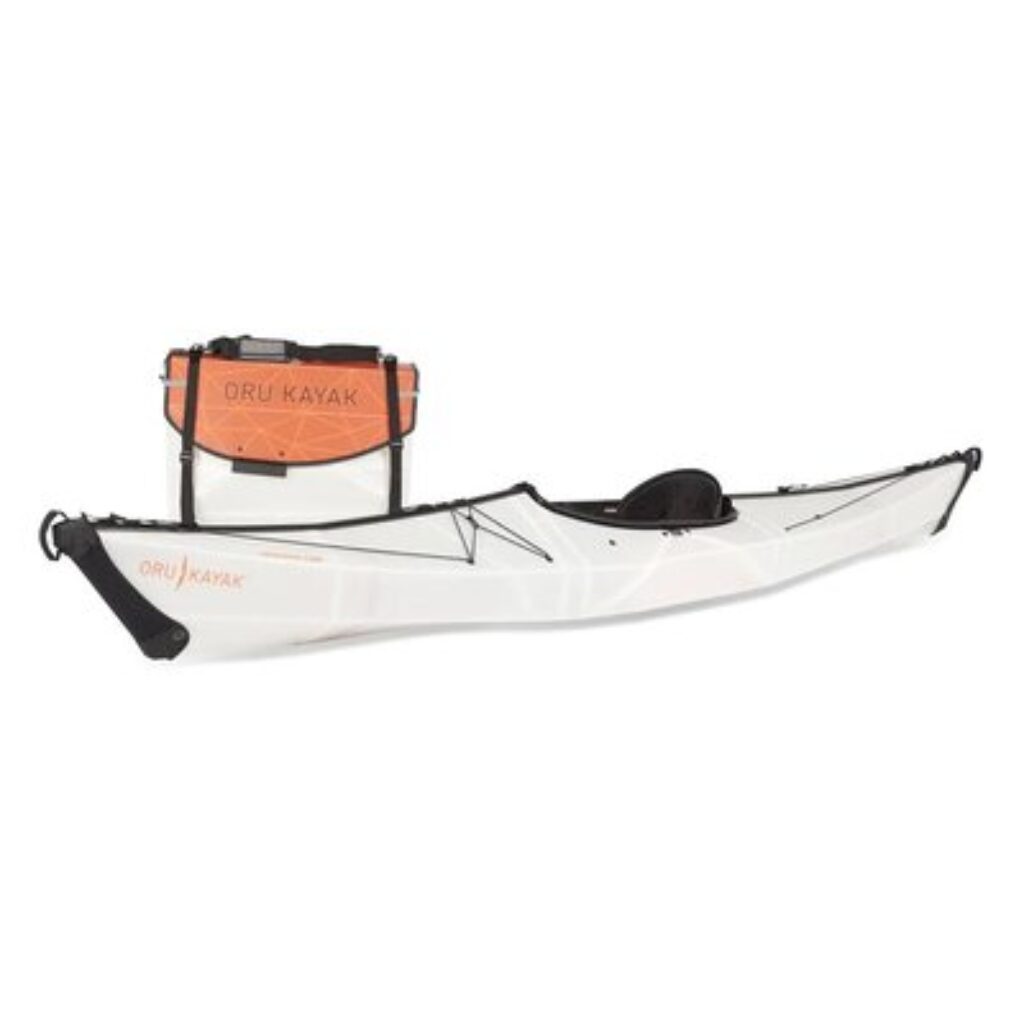
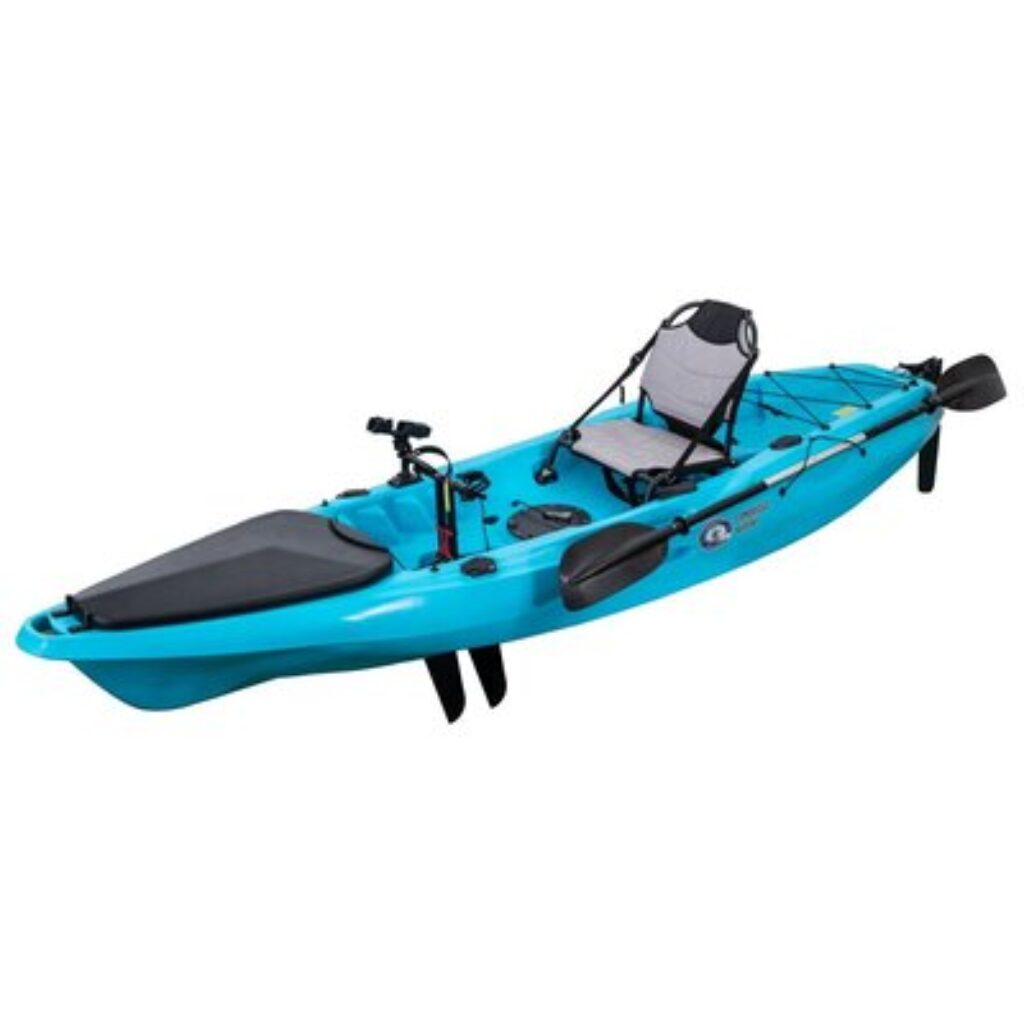
Location
If you’re fishing in calm, sheltered, largely wind and tide-free conditions regularly, then you can choose a kayak designed for comfort and speed. A flat bottom hull, retractable keel and a raised seat would be a fantastic option for this more relaxed type of fishing.
Whereas if you’re fishing out on the rough and ready seas in high winds and rip tides, you really need to invest in a wider base, fixed keel and low seat that would provide a better kayak fishing experience. Pedal power or a kayak with a motorised mount is never a bad idea too.
Kayak Fishing Tips and Techniques For Beginners
Fishing type
The majority of kayak fishing is done on a lure fishing setup as it is arguably the least finicky fishing type and re-rigging can be done in really tough conditions. Additionally, you can troll off the back of a kayak as long as you’re lure fishing. This means you cover more ground than almost any other type of fishing and you’re never out of the water.
Fishing out on the ocean requires a kayak able to handle the conditions, corrosion and rough ground associated with the sea. If you’re someone who practices a lot of fly-fishing, there are kayaks specifically designed for that. A wide base, a standing base and a high-up chair all provide an essential base for casting.
FAQs
You should spend around £500 on a good quality entry-level kayak on the premise you’re taking it seriously. If you’re a beginner focusing more on value than any other metric, you can pick up a reasonable fishing kayak for £300 – 400. If budget is no object and you’re looking for a top-of-the-range model that is pedal-powered, motorised, lightweight, fast, and stable, then you should spend £1,500 or more.
It’s also important to know that kayak fishing accessories can setup back hundreds of pounds, so be wary of the total cost.
